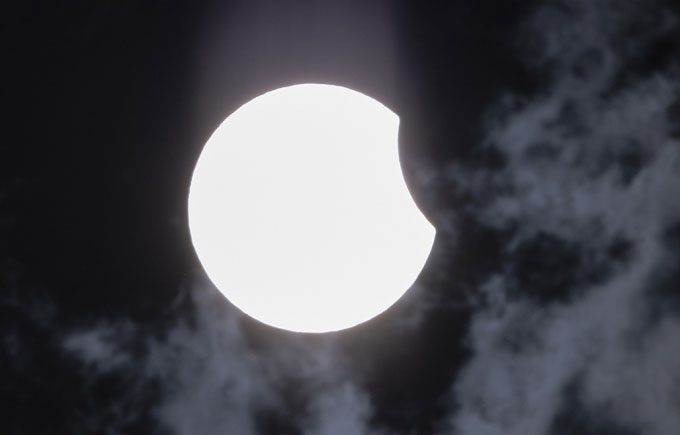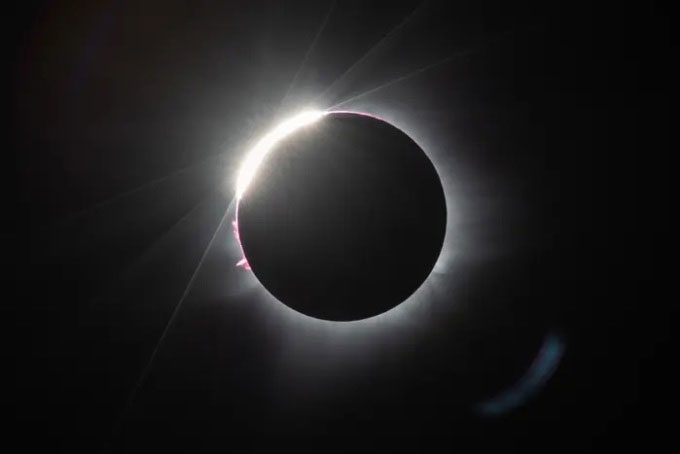On April 20, a hybrid solar eclipse was visible in various locations across Australia and Indonesia, with some parts of New Zealand, the Philippines, East Timor, and Vietnam able to observe a small partial eclipse.
Nearly 20,000 people gathered under a cloudless sky in Exmouth, Western Australia, to witness the total solar eclipse, which lasted about a minute, on the morning of April 20. This location was one of the best spots in Australia to observe this rare hybrid eclipse.
This solar eclipse began in the southern Indian Ocean, sweeping across Australia, Southeast Asia, and concluding in the Pacific Ocean. However, the areas where the annular and total phases were visible were very narrow, mostly over the ocean. The first place in the world to see the partial phase of the eclipse was around 8:34 AM (Hanoi time), with the total phase occurring around 9:37 AM (Hanoi time).
The total solar eclipse observed from Exmouth, Australia. (Video: Chris Lewis/Twitter)
Vietnam was not within the path of the eclipse, thus only a small partial eclipse was observable. The partial eclipse in Ho Chi Minh City was visible at 11:20 AM, but the coverage was very low, around 5%, according to In The Sky. Some other regions, such as Nha Trang and the South Central Coast, had better visibility with coverage around 9%.

The moon covers the sun by 5% at 11:20 in Ho Chi Minh City. (Photo: Minh Hòa).
During the hybrid solar eclipse, some regions on Earth will observe the total phase while others will see the annular phase (and some areas will only see a partial phase). The total phase of this eclipse was visible in the North West Cape peninsula and Barrow Island in Western Australia, the eastern region of East Timor, Damar Island, and part of Papua province in Indonesia.

Total solar eclipse observed in Western Australia. (Photo: Scott Bauer/Guardian).
According to EarthSky, hybrid solar eclipses are very rare and occur only a few times per century. Out of 224 solar eclipses in the 21st century, there will be 7 hybrid eclipses.
A hybrid solar eclipse is a combination of two types: total solar eclipse and annular solar eclipse. Specifically, a solar eclipse occurs when the Moon is positioned between the Earth and the Sun, blocking some of the sunlight from reaching the Earth. At that moment, the shadow of the Moon will cast down on the Earth. In the areas where the Moon’s shadow sweeps across, observers will see the Sun partially obscured by the Moon (partial eclipse) or completely covered (total eclipse).
When the distance from the Moon to the Earth is greater, causing the apparent size of the Moon to be smaller than that of the Sun, the Moon cannot completely cover the Sun, resulting in an antumbra (the outer shadow). People in this region will see the Sun obscured in the center, still revealing a ring of light around it, which is known as an annular eclipse.


















































